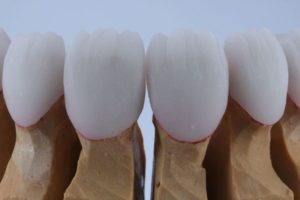Occlusion or Delusion: On the Importance of How We Explain BITE
When we say the word “BITE” to patients, what do we really mean and what do we hope to get out of it?
Dr. Brady is back with the next post in her “Occlusion or Delusion” series. Don’t forget to read the past installments! Catch up with the most recent post over at Gold Dust Dental Lab’s blog.
What do we mean when we say “BITE”?
 Whenever you use the term “bite” in your practice, you need to clarify the difference between how you understand it and how the patient understands it.
Whenever you use the term “bite” in your practice, you need to clarify the difference between how you understand it and how the patient understands it.
If you tell a patient to bite or ask them whether their bite has changed, you have to interpret that information based on multiple factors. Because truly how much faith can you put into those questions? Even small bite issues can have dramatic effects.
Patients who walk in and have had previous equilibration or occlusion therapy think the dentist who did their treatment before was a quack. But was their dentist really a quack or did they just not give the patient the right expectations for the treatment?
Maybe that patient was never told the “why” behind the treatment.
This leads into what we teach in Ultimate Occlusion 2 on appliance therapy. We have to be mindful of making patients aware of the reasoning behind our choices about their health. What does the treatment prove and how do we prove that to the patient?
In the process of being more thorough, you may even learn that there isn’t a connection between what you think is causing the problem and the problem itself. This is why it’s so important to explain “bite” to patients.
Where do you encounter uncertainty in dealing with patients and what do you find is best for communicating openly with them? We’d love to hear from you in the comments!




This is a great topic that impacts my practice on a daily basis. Helping patients understand the reasoning behind our treatment or the “why” when it relates to occlusion can be very difficult. I believe it’s fair to say many dentist don’t fully understand occlusion. I know I didn’t until I really focused extra time on learning. So to have a patient understand in the span of a few minutes can be quite challenging. Even when symptoms of a “bad bite” are obvious (broken teeth, worn teeth, TMD, changing occlusions) the patient still has a hard time seeing the value in treatment, even the most conservative treatments like equilibration or simple splint therapy. I would love to hear other people’s ideas on how they effectively accomplish helping patients own this condition.
Honestly for me the “best” way to hep[ a patient own what is happening with their occlusion isn’t about what I say, but about helping them experience it. For years I did that on the top of an acrylic appliance, either flat plane or anatomic. I still use both of these, but have come to rely heavily on a pre-made shell device called QuickSplint. I can postulate with a patient that I think they may grind or clench, that their bite might have something to do with what we see going on, and then quickly and inexpensively give them a device so they can feel the differences.